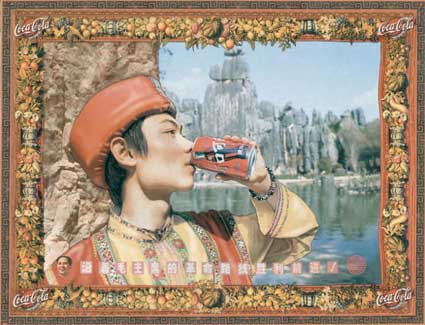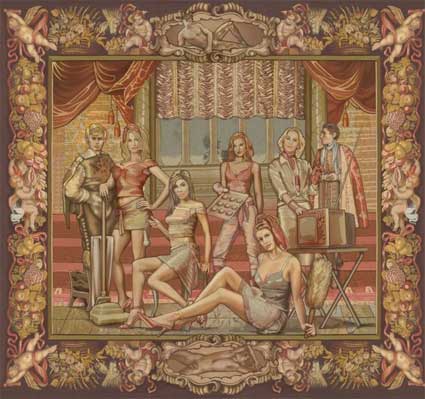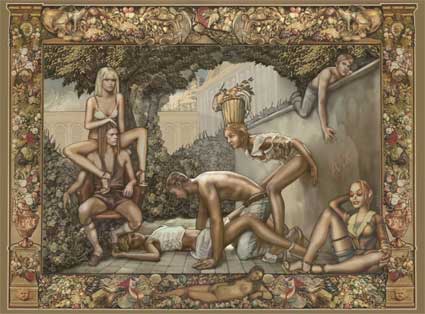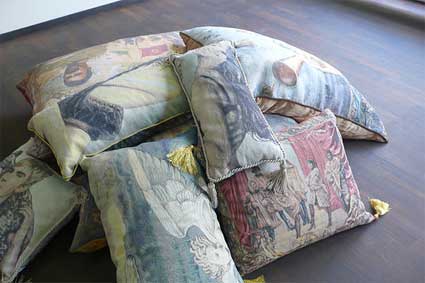During the Middle Age and Renaissance tapestries had a role similar to the one wallpapers have today. You would not use them as carpet and just throw them on the floor, no no no, you would hang them on the walls to decorate the room, insulate the walls of your castle during winter, and delight your guests. Kings and noblemen would roll up and transport tapestries from one residence to another.
 Margret Eicher, Eins, Zwei, Drei (not part of the DAM exhibition)
Margret Eicher, Eins, Zwei, Drei (not part of the DAM exhibition)
Margret Eicher has revamped the old tradition of the gobelins tapestry (which dates back to the 15th century but keeps receiving some attention from contemporary artists) except that instead of hand-embroidered tapestries, sewed by skilled craftsmen/craftswomen, the tapestries are refined industrial products, woven by a computer.
Scenes depicted in the Gobelins were usually inspired from famous paintings or religious art. Eicher remained truthful to this inspiration and uses the pillars of modern days religion and visual culture -TV series, video game and luxury- to set the scene of her tapestries.
 Margret Eicher, Die 5 Tugenden (The 5 Virtues), Tapestry, 2008
Margret Eicher, Die 5 Tugenden (The 5 Virtues), Tapestry, 2008
The three large-format tapestries exhibited until May 17 at the [DAM] gallery in Berlin, show different aspects of femininity. Desperate Housewives Bree, Gabrielle, Suzan, Linette and Edie hold freshly-baked cookies and show their best profile, on another tapestry high-heeled ladies wrapped and coiffed in fur defiantly look at you and on the third one young couples frolic under the bored gaze of Lara Croft.
Eicher’s digitally woven collages compile pictures with a political background with sexy D&G style advertisement found in the pages of glossy fashion magazines to realize astute portraits of our times.
 Margret Eicher, Erste Nacht, 2008
Margret Eicher, Erste Nacht, 2008
Some more images of the tapestries. I couldn’t help taking others.
The exhibition runs at [DAM]Berlin until May 17, 2008.

Previously at [DAM]Berlin : A conversation about exhibiting and selling digital fine art and Generator x – Beyond the Screen.
